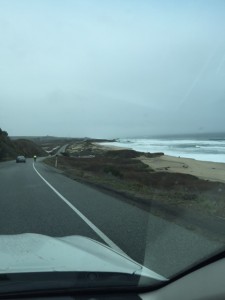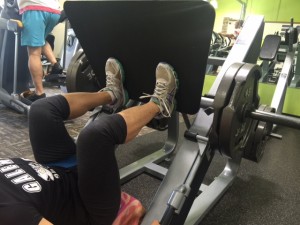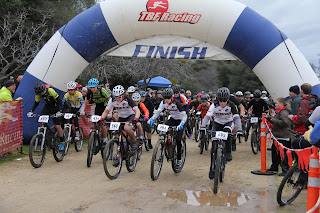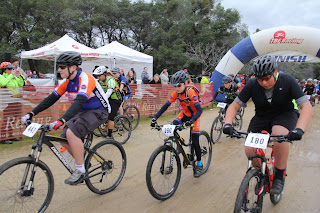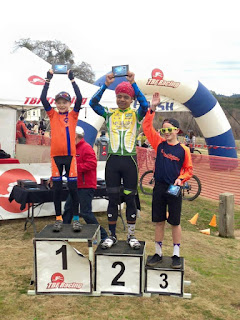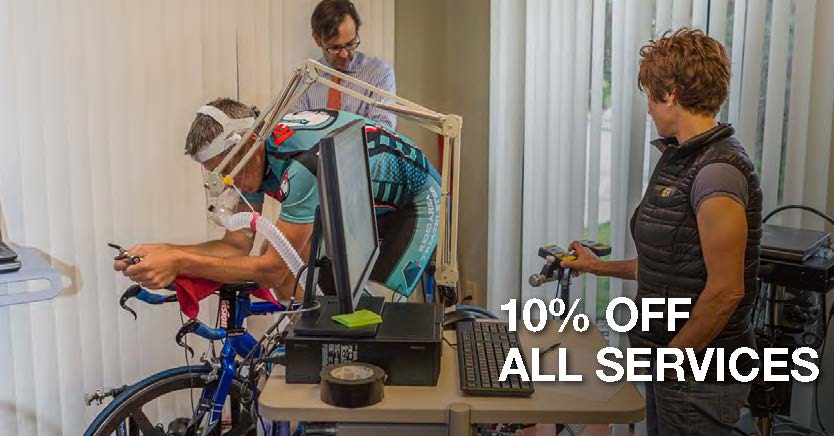Now that we days are shorter, and weather curtails our endless outdoor adventures, perhaps you find yourself with a bit more time for reading? Below is a well detailed retrospective account of this year’s Leadville 100-mile Mtn Bike Race, by long-time Silver Sage-o2fitness-athlete Andy Buckley. Maybe too, this read will provide some mental visuals to motivate your current transition season, strength and endurance training. Enjoy with your favorite cup of coffee…

When one’s purpose is to achieve a particular outcome and that outcome has importance, it can be wise to look inward toward the “why”. Why is that outcome so important? As a man trying to meter ego, I am struck by how often my insecurities are drivers of achievement in my life. Being ok in the present moment is a different thing for me altogether, being at peace with where I am without judgement is a challenge.
To understand the male ego you could perhaps consult with your therapist friends, read those analytical self-help journals on the bookshelves at Amazon, or you could just go watch the party that the Leadville Trail mountain bike race has become. You will see every manifestation of insecurity as some of us, the males; endeavor to purge ourselves of the demons that have plagued us since, for me, junior school. Just how deep can we dig or how fast can we go, can we keep up with the other guy, and if we can’t what’s our reason du jour.
OK, perhaps that is a bit dark, but that’s one perspective of an amateur armchair analyst. As a my friend Shane tells me, “your always looking for meaning”. (the subtest may be- just ride dude)
For me it’s been about outcomes for most of my life. Proving to myself that I can do the next thing, that I am worthy and often living in the future thinking of the next finish line. This year’s outcome was to be sub nine, that is, home to the finish within nine hours of the start. What does that get the man? A bigger belt buckle of course!
Training

Training to simulate Leadville, here atop Sardine Peak with the Usual Suspects
One of the great things about Strava is that you see with great clarity data on your annual efforts, hours and miles in the saddle and on each bike. Recognition of now having tens of thousands of miles in my legs over the last twenty years gives me a great sense of the limits of my body and when I am fit versus not.

Atop the world on Babbitt Peak
This year I worked with more patience in the early season, putting in slow miles, them moving to the road bike for pace-line and spikey interval work. By the time I got to July and coupled with a bike change (the hard tail plan just did not work out for my back), I felt quietly confident. In fact on my practice race the weekend before the Northstar Leadville qualifier, I did really quite well testing the new full suspension.

Tahoe Trails start
Then came our Tahoe Trail 100 qualifier, a reminder that quiet confidence can be washed away like a temporary tattoo in the shower. I struggled in this race, the whole 5h35m felt like a push, even with the pacing aid of my friend and trainer Julie Young. What I did learn was that even when I feel the dead legs, I can still force myself to push on. I didn’t get to my imagined 5h15m, but panic did not ensue, which is a good thing for me.

Tahoe Trails Finish
Leadville the vacation

No road trip is complete without a Starbucks in Elko
I had decided early to make a longer stay in Leadville for 2015. I wanted to get used to the altitude, and soak up a little more classic Colorado riding. I traveled there with my cousin’s son Ollie Sanderson, who himself is a young rising talent on the bike. We joined other friends a week early (Andy Tuthill, Josh Fonner, Zander Higbie) for a mix of Leadville and Aspen riding.

Andy-squared taking it all in, atop Columbine
What was truly fantastic was to experience Powerline and Columbine with those friends and get the chance to appreciate the natural beauty that is the high open country around Leadville. Being at 12,500 feet and feeling the chill air while seeing the amazing wild flowers was such a gift to the spirit, oh and the other thing, we rode the bigger climbs and in process de-mystified their power over us, they seemed so much shorter and easier as stand-alone efforts.

Columbine
August 14, 11am
“Everyone has a plan until they get punched in the mouth”-quotes Ken Chlouber of Tyson. Ironically I had spent an hour and half early this week formulating a plan with my team mates, pacers, and friends Julie Young and Sian Turner Crespo. We had discussed many “what if” scenarios, little did we know there was a punch coming.

Sian all smiles at the start
August 15, 6:30am
I never sleep the night before, but on the start line I feel complete calm; there is absolute certainty about what will happen next. I always love the national anthem, as I did this day; I’m calm and relaxed as I watch the Stars and Stripes fluttering in the light breeze, while Ben Wiens hammers those tougher notes and key changes.
Then we start-I am leading the three of us (sorry Josh if we left you) staying safe and left of the fast moving riders on the pavement. The warm air in town is replaced by damp very cold air in the lower valley as we hit the St.Kevins Climb. Our pace is not blistering, but it’s up there. For the first time in four years, I can actually still see the leaders ahead of me on the dirt, which means we are with our good pace. Once over this first climb we hit pavement and find our own pace in preparation for the climb up toward Hagerman and onto Sugarloaf pass.

Climbing toward Sugarloaf
Once back on dirt is seems so fast to get from graded dirt road, onto rocky jeep road and then in no time we were on the descent of Powerline, looking for the best lines, threading the needle where we could to pass the “dirt roadies” – I selfishly really like this part of the course, we had agreed to back off and not take any silly risks, but still, passing people means so much to the fragile male ego.

Powerline descent
When we got back to pavement we were a little separated, but quickly re-formed our threesome, and slowly added riders to a strong pack to start our way across the flats. It is so important to have folks that will work a pace-line with you, road technique can really shave lots of time off, and working together can be good for all as we race the clock. Having a strong coordinated group of ten, we felt lucky to be charging down the pavement. I did my turn on the front for thirty seconds and guided us through the first right hand turn, then gently slipping off to the back of our pack.
A couple of people made short pulls and started to move back. Then, what looked like a friendly hand tap to the shoulder from upstream to downstream members, turned into slow motion carnage; here was our punch. In a split second two riders went down and it seemed like everyone but the guy on the front and a couple of us at the back ran into and over them. The sounds that I heard were so unfamiliar; I have never been in a road style pile up and the mixture of bikes colliding with bodies along with groans of exhaling air was quite traumatic to experience. In a flash I was off my bike and trying to pull bikes and humans apart. The guy at the bottom looked bad, and furthermore Julie immediately said “I’m hurt”…”my hip”. I stared at the big guy on the ground, shirt in shreds around his shoulder, and felt that urge to do something to help, he was already attended by a friend, but it is what I do at work right so shouldn’t I just take over? Then Julie yelled – “you guys gotta go”…”you gotta go now” and so we did, Sian and I jumped on our bikes and off we went after being “punched in the face”- a new plan. Sian had twisted handlebars and had lost her Garmin, but luckily for her she landed mostly on people versus bikes and ground. We peddled and I swore a little, we were both struck with disappointment I think, but we were also trying to re-process a strategy.
The so called flats from Pipeline to Twin Lakes are really deceptive in terms of opportunity. You can soft pedal or hard pedal, but smart racers tag into a train for maximum gain of time. We grabbed a train or two and we regained our composure and focused on the next segment as coached. After dropping off a group as we got close to the single-track section on this part of the course, we had a huge surprise to be joined by our trainer, Julie (hard as nails) Young. She was back on her game and would go “as long as she could”.

Twin Lakes Aid Staion
Twin Lakes came very quickly; our pace was almost exactly the same as my 2014. I was determined to take stop time at aid stations down to three minutes from ten in 2014, so the camelback was off and replaced in a flash, chain was lubed and I was ready to go with a musette full of food and a coke. So note to self here, watching guys on the Tour De France grab bags and transfer their stuff to pockets is not training. It’s actually quite difficult on a mountain bike to balance, pull baggies, open baggies, eat a peach, pop a coke and pocket stuff. It did make aid faster, though trying to fish a boiled egg out of a mass of cliff bar and shot block segments did not work. Scott, Ollie and Zander did an awesome job as crew, but mushy boiled egg was a miscommunication from me to them.

Probably most racers missed the opportunity to appreciate the Columbine view
On to Columbine. I had ridden Columbine Mine with my good friend Andy Tuthill, Ollie and David Campbell the week before. I had felt great on the climb, easily riding third gear with a 32tooth up front. Once back at the bottom Andy suggested a second lap and I reluctantly said “well ok” . It was striking how much harder the same time climb felt, enough for me to switch to a 30 up front. Now we were on the climb and I felt good, Julie pushed ahead as bait, always just in sight, something to aim for. Sian dropped back a bit at first, but as usual her strength builds as she climbs and she was soon alongside as the road kicked up to the goat trail climb. Perhaps for some this could be a challenge, for me to see Sian climb ahead of me was the carrot I needed to ride where in the past I have walked, my only goal here was to keep her in sight as a pacer. She inspired me to pedal ninety percent of the hill this year.
When I reached the peak point where the air feels so thin, where every micro effort seems to push you very close to your redline. I came upon Julie smiling on her way back, “catch us on the downhill”! I whispered a “gottcha” and went on to that looping point, for the first time not stopping for a coke and just pedaling back away toward home. Julie and Sian were a few minutes ahead and I was determined to reconnect our group, so with tires dancing over the rocky descent and some nimble maneuvering I was back on by the end of the goat trail hits the real road. Our strategy was to use my extra body weight to draw quickly down the descent, it worked to an extent, but not as well as we had hoped with a few sit ups to re-gather ourselves.
When you reach the bottom of Columbine, it always takes a few for your legs to readjust to real pedaling again. On this occasion, my legs felt like lead, I knew my crew and aid was so close now and still it is a psychological push you have to make to get the legs going. It’s not a hurt, its an adjustment through discomfort since they don’t work like they just did; you always know it passes, but it is still always so hard. Guess that’s where “shut up legs” comes from!

The journey home really starts right after seeing my crew at Twin Lakes. It is such a powerful recharge to be cared for with the little stuff; new camelback, new bottle, more food, lube and a big push and you’re away again with a “love you, see you at the finish”. Good tacticians now look for groups, saving energy while maintaining speed is important for all, but for nine hour tipping point people like me, critical! We were three already, so we had that advantage and as we added three more, we got to be pretty fast on the first part of the fire road home. The wind was blowing a little and the combined effort allowed us to make good time with a final spurt as a giant guy came by with super legs; we tagged along for the ride.
Riding back up to the plateau on the short single track is always harder than it looks, the trail feels long and slow and on this day the sun was starting to feel warm. It’s probably only ten minutes, but it caused the three of us to split up and arrive at the plateau separately. Julie waited and we tagged on to the first dip with the short sharp pushing climb back onto the road real. Once on the road I am actually unclear what happened, but somehow we got split up, Julie and I from Sian. (Sian later told me that this was her low spot in the race) I guess we got on the back of a group and before we knew it, we had dropped Sian off the back. We backed off our group and slow pedaled and then joined another group later hoping to re-connect. We had a lot of debate over what to do as the minutes passed one at a time. Julie said, “you should go ahead, I will grab Sian”…”jump on that group or the next”. I sheepishly moved off on my own, looking for groups, not finding any, pushing the wind myself. What is really difficult for me in this type of situation is my “ideal story”. That is we all planned together, qualified together, rode the last five and half hours together and in my mind the perfect outcome was to cross the line three abreast at 8:50, hands raised in unison. My sense of responsibility toward others plays out often in my life, and there it was again. So I made a gamble, I sat up and took it easy for a while, I stopped at Pipeline for a coke knowing that my friends would soon re-join and we would be back together again. Note to self here, when stopping for coke, do not turn your back on the race line, your friends might just ride right by. Ok they did do that! And I didn’t know. I swished my coke and pedaled on seeing a couple of folks ahead approaching the pavement road. I thought, well I guess I should catch them for the road segment, and how surprised was I to see Julie and Sian. We did talk this out later on how Julie was yelling my name and I had not heard, but to be totally honest in that moment I did have a WTF thought. Remember I am tired by this point and not my perfect self.

Short single-track section
As we group up on the road with another guy and a single-speed guy I ask if they want to work with us. Sure, but Mr. Single speed cannot guarantee he can help much on the flat. With the greatest respect for single speed guys and what they do on a race like this, selfishly we needed was meaty road guys with gears to block the wind. We made the best of it and formed a pace-line and then an echelon and eventually we three pulled ahead and dropped them, right at the point where I expected the Strava Coke folks (who were not there-and everyone else that expected them knows what I mean, you look forward to little things), on to Powerline.
Powerline at mile three is really so, well easy. I had ridden it twice the week before and had been stunned by how much shorter it seemed than my memory. Also, rode the whole thing twice with only a single dab. However, at mile eighty it’s a different story. I am not sure the actual temperature on Powerline, I know it was less than 100, but more than 65. Ok probably upper seventies to low eighties. In my experience, this is hot for this course, so hot that the drinks volunteers were already running out of water with the first couple of hundred up the hill. As we started the climb I knew that Sian and Julie would try to ride the whole thing and I really wanted to go with them. I made it up the first third of the steep first segment, until I just had to dismount. I just thought, keep them in sight, that is all you need to do as pace. That actually worked too, as they grabbed a Dr. Pepper atop the steep climb I got close again and I used the ladies as pace the whole way up, only dismounting for about ten more yards as I lost my balance on a rocky segment. The climb is brutal at this mileage, but it did feel ok compared to past years. I was just sweating so much and starting to expect cramps at any time, you can kind of feel them off in the distance getting ready to strike.

The fresh air at the top of Powerline felt so good and I was now on a mission to reconnect with my team. Last year I had bragged about riding the Sugarloaf descent fast, now it was time to do it again. I figured I would push past Sian and onto Julie, which I did and soon we were off the rocky road and on the gravel road. We pushed on toward the pavement and Julie pulled me for a while and then went back to grab Sian. I pushed on as I was sure they would catch me on the other side of Turquoise Lake on the pavement climb to Carter Summit. My cramps did the usual kick to my right then left adductor with alternating cycles and I pedaled as best I could through each cycle. Then there they were, back on me and past and I could use the same technique to pace. Just keep them at twenty yards, then fifty, then one hundred, ok keep them in sight and eventually we were at the Carter Summit.

View from Sugarloaf
Fantastic! Ollie was there for me with a fresh bottle and another Coke, I threw off the Camelback and away I went. I was back on the girls in a couple of minutes and Julie tagged on to me as I enthusiastically pushed toward the top of St. Kevans. This part of the trip home has a couple of kicker climbs that add pain and cramp to the legs right when you want to quit, but again this year I pedaled through and found some ancillary strength knowing the descent was coming soon. At Carter I had looked at my watch to see how much time was left for sub nine. Guidance I have heard is to have one hour from Carter, I had gone through at about 2:37pm, leaving fifty three minutes to get home. Could we do that, or could I do that? I would give it my all.

View from St. Kevans looking toward the finish line, aka Leadville
In our planning conversations we had talked about one particular scenario, one big “what if”. What if, we are really tight on time, who should Julie pace with? We had decided to try to get whoever seemed strong at that time to the finish. When Julie and I got to the top of St.Kevans, we didn’t talk about the plan or about what now, we just went, and really fast. In unspoken fashion we broke up our group which makes me sad as I think of it.
I took a number of risks on the descent and passed a number of people, Julie was right behind me. What I do remember is getting to the valley floor and feeling a bit of wind on our backs as we rounded the corner on the dirt road. Julie said, “can we make it”- I said something like” unlikely, but maybe”, she told me to grab a guy’s wheel that was passing and I had a moment of doubt, I told her I was all in and couldn’t go (that actually wasn’t true it was just a mental block of ten seconds). She pulled ahead and I bridged to him using her wheel. We were on and without talking I knew we were going to give it all to try to make it. All I thought about was the wheel in front and how to conserve, I did calcs based on the time and distance left. We needed to ride home at an average of about sixteen miles per hour. I looked down and we were almost at twenty, maybe we could do it! Pedal Pedal! Pedal! At the bottom of the dirt road that leads to the boulevard we had fifteen minutes and three miles. Ok re-calc, ride at twelve miles an hour, not possible for the first two hundred yards, but soon we were at twelve to fourteen with a couple more guys. This last slow draw up to town goes so slowly uphill, I really thought we could do it. The other guys in our group started uttering stuff, “darn we were so close” …”we were almost there” – Julie yelled at me, forget the time, let’s just go. We dropped those guys and we were on our own, hitting the pavement I got a yell from Heidi Colley, “you can do it Andy” and with a minute to go I pushed so damned hard up the pavement to the finish. Every single pedal stroke was hard to the finish this year, and without emotion I pushed every last ounce of energy out as the red LED clock came into view.

Julie leading Andy in to the finish line
Nine oh three and thirteen seconds (9:02:48 Chip time), as I crossed that line, into the arms of friends, colleagues and loved ones. Josh held me up on my bike as I told him “I gave it everything”, I told Marilee how good it was to see her, and Dave Wiens, “darn, so close” they all hugged with knowing compassion. Then I held my sister trainer Julie Young and thanked her for everything. And together we waited for Sian. She was there in a couple of minutes and I said “I hope I didn’t screw anything up for you”, which was maybe a silly thing to say, but I did hope that.

Sian hitting the finish line
I didn’t get emotional until Ollie and Scott grabbed me to say “sorry”. They understood my intent, my goal, and just briefly I let go as they held me up. Things get a little time confusing here, I was on the edge for about ten minutes, but I talked to other friends, found shade, almost passed out, etc. But one thing really stands out for me. I saw Andy and he looked right at me and said “its ok man, you did a great time; it was hard, it’s not about this time today, it’s about the process, and we shared this” the point being that this special shared experience with its stories, fear, romance and panache is what it really is about. Now, either in that moment or on the phone later (and he would repeat it again the following day) Andy said “I love you man”, four simple words that in the moment surprised me, but so completely captured the why benefit of doing these crazy races. Andy’s openness captured the very “why” that this is worth doing, because of the bonds that are formed through race anxiety and adversity, training and the love for the bike that we all share. The English in me didn’t tell him “love you too man”, but I do.
So does intellect conquer ego, and see process as the victor over outcome. MaybeJ we will see next year?









